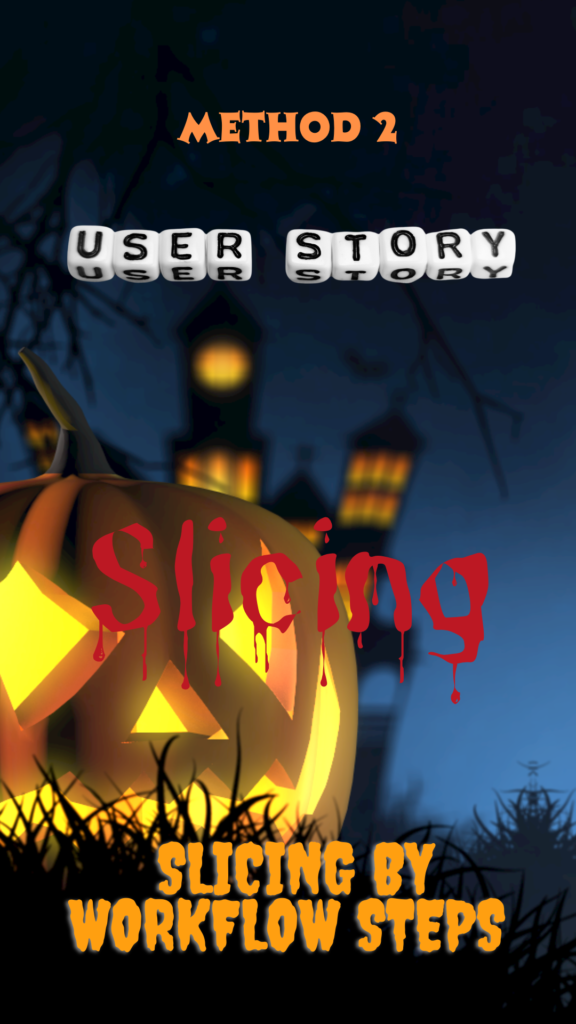In the eerie world of software sorcery, where lines of code cast long, sinister shadows, we continue our chilling tale of “User Story Slicing.” Our journey into the depths of software development takes a more ominous turn as we explore the haunting secrets hidden within workflow steps.
Our tale begins with the ominous “Slicing by Workflow Steps.” In this shadowy realm, most features and methods can be described as sinister workflows, each with its own devilish steps. The art of slicing User Stories comes to life as we break down these workflows into smaller, bite-sized stories, each more chilling than the last.
Imagine a cursed User Story for an e-commerce website:
User Story: “As a registered customer, I want to purchase the items in my shopping cart so that my products can be delivered to an address I specify.”
But wait, beneath the surface of this seemingly innocuous tale, a web of ghastly steps unfolds:
🧛♂️ “As a registered customer, I want to log in with my account so I don’t have to re-enter my personal information every time.” 🎃 “As a registered customer, I want to review and confirm my order, so I can correct mistakes on my order before I pay.” 👻 “As a registered customer, I want to pay for my order with a credit card, so I can confirm my order.” 🧟 “As a registered customer, I want to pay for my order with a wire transfer, so I can confirm my order.” 🕸️ “As a registered customer, I want to receive a confirmation e-mail with my order, so I have proof of my purchase.”
These steps, like ghosts in the machine, reveal a hidden complexity in the seemingly simple User Story. By dissecting the story into its individual, spine-tingling workflow steps, we make the customer’s intentions chillingly clear to the developer, as if reading a cursed incantation.
We must never forget the true purpose of User Stories – to engage the customer in a spectral conversation about desired functionality and to bring clarity to our haunted expectations before summoning the requirements for the delivery team. The more granular our User Stories, the more specific our discussions become, unveiling the haunted Acceptance Criteria that guide our way.
Knowing the sinister details of the workflow, the cursed team can prioritize functionality based on its wicked business value. For instance, in the first release, we may only allow customers to pay with a credit card, or perhaps we send the order confirmation manually, like cryptic messages from the other side.
In the shadowy depths of this world, granular User Stories enable the delivery team to engage in bone-chilling discussions about the desired functionality, ensuring that no eerie workflow steps or Acceptance Criteria remain hidden.
So, dear readers, slice, dice, and discuss – for the spirits of software development have more sinister tales to tell. 🌙💀🕷️
#UserStorySlicing #SoftwareHorror #WorkflowWitchery #EerieDevelopment #HauntedSoftware
#SpookySoftwareSlicing #UserStoryHorror #WorkflowWitchcraft #SoftwareSorcery
#SoftwareDevelopment #UserStories #HalloweenTech #WorkflowSteps
#SoftwareSlicing #HalloweenStory #WorkflowSecrets #TechHorror

